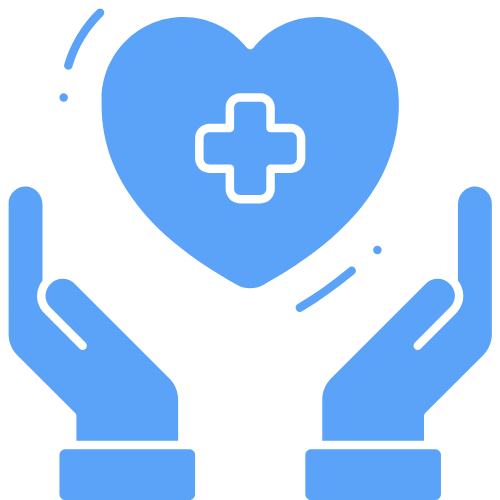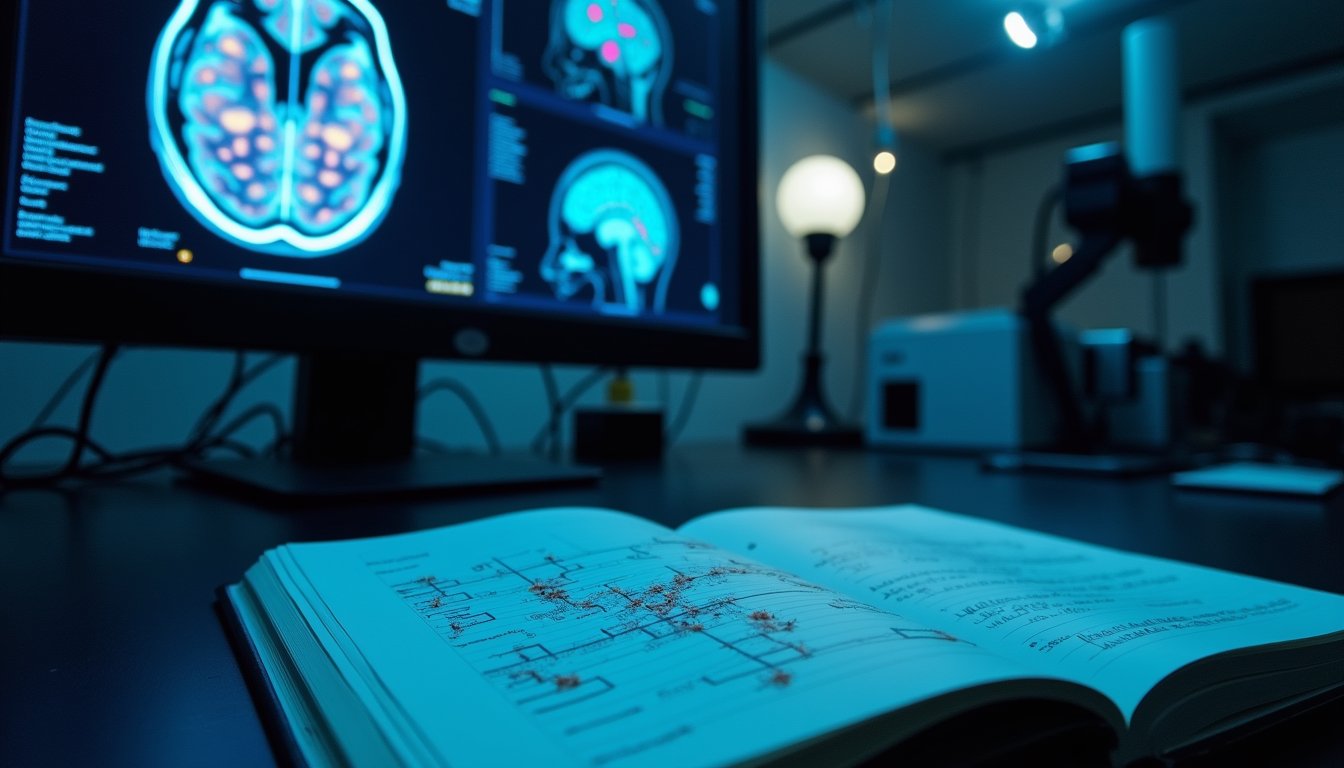Digital solutions now make mental health support more accessible than ever. You’ll find AI-powered platforms, teletherapy services, and over 20,000 mental health apps that provide 24/7 support and personalized care options. These technologies break down traditional barriers like cost, location, and provider shortages that affect 89.3 million Americans. With 76% of providers offering online therapy and AI-driven tools detecting early warning signs, you’re just steps away from uncovering your ideal mental health support system.
The Digital Mental Health Revolution

A digital revolution in mental health care is transforming how we detect, prevent, and treat psychological conditions. You’ll find that tech-enabled interventions have grown dramatically, from reaching just 10% of adults with serious psychological distress in 2013 to an expected 40% by 2024.
This shift addresses a critical need, as over 55 million U.S. adults experience mental health symptoms. With smartphone accessibility reaching 85% of American adults, digital mental health solutions can now reach most of the population. Traditional reactive care approaches focusing solely on medication and counseling have proven insufficient to meet current demands. Through AI-powered platforms and mHealth apps, you now have access to continuous support beyond traditional clinic visits. These digital tools bolster clinician-patient collaboration while enabling early intervention and prevention strategies. Platforms like Clare&me and Limbic Care now offer AI therapy companions that provide round-the-clock mental health support. You’ll benefit from AI-driven predictive analytics that can identify potential issues before they escalate, while virtual reality and digital therapeutics offer evidence-based alternatives to conventional treatments. This technology surge makes mental health care more accessible, personalized, and proactive.
Breaking Down Access Barriers
While digital solutions expand mental health care reach, significant barriers continue blocking access for millions of Americans. You’ll find equity-focused strategies emerging to tackle these obstacles, particularly in underserved communities where provider shortages and financial constraints hit hardest.
Digital innovation brings hope, yet systemic barriers still deny mental healthcare to millions, especially in underserved communities facing resource gaps.
Consider these critical challenges that require immediate attention:
- Financial barriers force 42% of Americans to choose between treatment and basic needs, despite ACA coverage mandates
- Provider-patient communication suffers from cultural mismatches and language barriers, limiting treatment effectiveness
- Geographic limitations affect 89.3 million Americans living in Mental Health Professional Shortage Areas
Digital platforms are breaking down these barriers by offering teletherapy options, multilingual services, and sliding-scale payment models. You’ll see increasing integration of technology-enabled solutions that bridge gaps while maintaining quality care standards. People with disabilities face unique challenges, as they are twice as likely to experience suicidal thoughts compared to the general population. The dramatic rise in telehealth adoption during COVID-19, from less than 1% to 40% for mental health services, demonstrates the potential for technology to revolutionize care delivery. However, research shows that virtual interactions remain challenging for some people with disabilities, highlighting the need for multiple accessibility options.
Technology’s Role in Mental Healthcare Delivery

Today’s digital realm opens powerful new pathways to mental healthcare through teletherapy platforms, which 76% of psychologists now use to reach patients who might otherwise lack access to treatment. You’ll find an expanding ecosystem of HIPAA-compliant messaging systems and mental health apps that offer everything from behavioral monitoring to cognitive training, with 76% of Americans actually preferring online therapy to in-person sessions. AI and machine learning technologies further amplify these digital solutions by enabling predictive analytics for early crisis detection and personalized treatment recommendations, though proper validation and ethical considerations remain essential. With approximately 350 individuals competing for each mental health provider’s availability, digital solutions help address critical access barriers. The 988 Crisis Lifeline provides round-the-clock support through calls, texts, or chat for individuals seeking immediate mental health assistance. With over 20,000 mental health apps now available on major platforms, users have unprecedented access to digital mental wellness tools.
Digital Accessibility Pathways
Technology has revolutionized mental healthcare delivery through diverse digital pathways that expand access and improve treatment outcomes. You’ll find equitable accessibility bolstered through technology-driven accommodations that serve diverse populations, from rural communities to individuals with disabilities. These digital solutions actively incorporate accessibility standards guidelines to ensure mental health resources remain usable for people with physical, sensory, and cognitive disabilities. Rigorous privacy measures are essential to protect sensitive patient data and maintain trust in digital mental health platforms.
Consider these key digital pathways transforming mental health access:
- Over 10,000 mental health apps offer real-time support and clinically validated interventions, helping you manage conditions like anxiety and depression
- Remote therapy platforms eliminate geographical barriers and reduce dependency on in-person providers, making care more accessible when you need it
- Social media channels amplify mental health resources and awareness campaigns, connecting you with reliable information and support communities
These digital solutions guarantee you can access mental health services regardless of location, ability, or socioeconomic status, while maintaining clinical effectiveness and personalized care approaches.
Emerging Treatment Technologies
Modern treatment technologies have revolutionized mental healthcare through five key innovations: AI-driven therapeutic tools, virtual reality therapies, wearable monitoring devices, advanced telehealth systems, and personalized neurotechnologies.
You’ll find AI chatbots providing round-the-clock support while algorithmic bias mitigation secures equitable care across populations. Virtual reality platforms offer controlled environments for exposure therapy, while wearable devices track real-time physiological markers to detect early warning signs. Through multidisciplinary collaboration models, clinicians can harness advanced telehealth systems that integrate biomarker data with electronic health records, enabling more informed treatment decisions. The integration of precision medicine approaches allows for highly personalized treatment plans based on individual patient data analysis. Emerging neurotechnologies, including TMS devices and neurofeedback training, deliver targeted interventions for treatment-resistant conditions. Smart medication dispensers with automated tracking systems help ensure patients maintain consistent adherence to prescribed treatments. These innovations are transforming mental healthcare delivery by making evidence-based treatments more accessible, personalized, and effective. The shift toward preventive mental health has accelerated the development and adoption of these digital solutions for early intervention and ongoing wellness monitoring.
Personalization and User Engagement Strategies
Modern digital mental health platforms now offer you personalized care through AI-driven systems that analyze your behavioral patterns and adjust therapeutic content in real-time. You’ll find that 51% of these interventions customize their approach based on your specific needs, from biometric data analysis to culturally adapted messaging that reflects your unique context. Your engagement with these platforms becomes more meaningful through features like adaptive interfaces, gamification elements, and predictive algorithms that optimize your treatment expedition while respecting privacy and cultural sensitivities. Despite these advancements, current digital mental health interventions face significant challenges with treatment dropout rates reaching up to 50%.
Tailoring Digital Mental Care
Digital mental health services are rapidly evolving beyond one-size-fits-all approaches through sophisticated personalization strategies. By integrating user personalization preferences with informed clinician oversight, modern platforms deliver customized therapeutic content while maintaining care quality.
Today’s digital mental health solutions offer three key personalization approaches:
- Adaptive content delivery that adjusts therapy modules based on your symptom severity and PHQ scores
- Real-time intervention systems that combine your mood data, activity patterns, and biometric information to provide timely support
- User-driven customization tools that let you select preferred therapeutic strategies and set personalized mental health goals
These personalized approaches utilize both automated decision-making and user input, creating more engaging and effective mental health interventions that respond to your unique needs and preferences.
AI-Driven Personalized Support
Anyone seeking mental health support can now benefit from sophisticated AI systems that deliver highly personalized care through data-driven insights. You’ll find digital mental health equity customized through AI-powered tools that analyze your unique patterns across multiple data sources, including wearables, social media activity, and speech patterns.
These systems create lifestyle-based interventions adapted to your specific needs by integrating genetic information, treatment history, and real-time behavioral data. AI chatbots like WOEBOT and WYSA provide 24/7 cognitive behavioral therapy, while smart algorithms monitor your progress through digital phenotyping. They’ll detect early warning signs with up to 90% accuracy using vocal biomarkers and biometric data. You can join AI-curated support communities that connect you with others facing similar challenges, all while maintaining anonymity and reducing stigma.
Privacy and Security Considerations

As mental health services increasingly migrate to digital platforms, protecting sensitive personal information has become a critical challenge for providers and patients alike. Strong data governance frameworks and user transparency rights must be at the forefront of digital mental health solutions.
To safeguard your privacy while accessing digital mental health services:
- Verify that your provider implements end-to-end encryption for all communications, including video sessions and chat logs
- Review the app’s data sharing policies and guarantee you have control over how your information is used, stored, and deleted
- Check for third-party security certifications and frequent security audits before sharing sensitive mental health data
The integration of stalwart privacy measures isn’t just about compliance it’s essential for maintaining trust and ensuring you can access mental health support without compromising your personal information.
Regulatory Framework and Standards
The evolution of safety guidelines for digital mental health tools requires you to understand both traditional clinical standards and emerging technological capabilities. You’ll need to implement cross-platform data standards that enable secure information sharing while meeting regulatory requirements across different healthcare systems and devices. To guarantee widespread adoption of validated digital mental health solutions, you must advocate for updated reimbursement models that reflect the unique value proposition of these technologies while maintaining accountability for patient outcomes.
Safety Guidelines Evolution
Recent shifts in mental health technology regulation have fundamentally transformed safety guidelines across global markets. Through patient-focused assessments and multistakeholder engagement, you’ll find stricter oversight of digital mental health tools, particularly AI and VR technologies.
Key safety developments now include:
- Mandatory clinical validation of therapeutic claims before market entry, ensuring digital interventions meet medical device standards
- Amplified data protection protocols requiring secure access controls and encrypted storage of sensitive mental health information
- Rigorous AI bias monitoring systems with regular audits and transparent disclosure of algorithmic limitations
These evolving guidelines reflect a broader shift in the direction of coordinated crisis care systems that prioritize both innovation and user protection. You’ll need to stay current with these regulations as they continue adapting to technological advances in mental health services.
Cross-Platform Data Standards
Modern healthcare data standards form the backbone of effective cross-platform mental health service delivery. You’ll find FHIR-based frameworks leading the charge, enabling real-time API access that’s essential for mental health apps and telehealth platforms. The US Core Data for Interoperability mandate has streamlined how providers share clinical information with patients.
To overcome interoperability challenges, you’ll need to utilize standardized coding systems like SNOMED CT for clinical terminology and ICD-10 for diagnoses. Standards adoption through Implementation Guides like Da Vinci and CARIN Alliance helps streamline data exchange between mental health providers, payers, and patients. While integration costs remain a barrier, especially for smaller practices, the benefits of standardized cross-platform communication far outweigh the initial investment, particularly in improving care coordination and reducing administrative burden.
Reimbursement Model Updates
Sweeping changes to mental health reimbursement models have reshaped service delivery frameworks, with digital mental health therapeutics (DMHT) leading significant policy updates. You’ll find expanded coverage now includes clinical social workers and cutting-edge DMHT device access starting January 2025, marking a pivotal shift in digital mental health care delivery.
Key reimbursement updates include:
- New payment structures with a 2.93% reduction in fee schedules, pushing providers to maximize digital service delivery
- Enhanced digital compliance protocols requiring specific documentation for remote therapeutic monitoring
- Broader telehealth coverage incorporating digital interventions and DMHT devices for behavioral health treatment
These changes reflect Medicare’s commitment to improving mental health accessibility while maintaining quality standards. You’ll need to adapt your billing practices and documentation workflows to align with these updated reimbursement frameworks for ideal service delivery.
Remote Monitoring and Treatment Solutions
Technological advances in remote monitoring have transformed mental health treatment delivery, enabling providers to track patient progress and adjust interventions in real-time. Remote Therapeutic Monitoring (RTM) systems now collect extensive data on musculoskeletal, respiratory, and mental health parameters, supporting integrated care pathways through secure data transmission.
You’ll find mental health services increasingly accessible, with telehealth utilization rates reaching 65.5% for mental health specialties. Care providers can monitor anxiety, depression, and trauma recovery through self-reported data and connected devices. This digital transformation amplifies mental health workforce readiness, allowing providers to serve more patients effectively.
Artificial Intelligence in Mental Health Support
Artificial intelligence has stepped up to revolutionize mental health support, delivering promising results across multiple intervention types. Through explainable AI models and ethics-driven development, these technologies offer personalized care while addressing accessibility challenges.
AI is transforming mental healthcare through ethical innovation, making personalized support more accessible and effective than ever before.
Key advancements in AI-powered mental health support include:
- AI chatbots integrated with CBT techniques reduce depression symptoms by 64%, providing around-the-clock evidence-based guidance
- Predictive algorithms achieve 92% accuracy in identifying suicide risks through health records and social media analysis
- Natural language processing systems detect subtle mental health indicators more effectively than traditional assessments
While technical limitations and ethical concerns exist, particularly around data validation and bias, AI’s potential to augment human care and improve service accessibility continues to grow, especially for underserved populations through mobile platforms.
Inclusive Design for Diverse Populations
While mental health technologies have expanded rapidly, their design often overlooks crucial barriers faced by diverse populations. With nearly 20% of children experiencing chronic anxiety and higher rates among minority groups, there’s an urgent need for co-created mental health resources that address cultural and linguistic barriers.
You’ll find the most effective solutions emerge through user-centered design approaches that integrate lived experiences. Culturally customized digital therapeutics must balance anonymity with trust while offering flexible engagement options. This means incorporating diverse support types from peer storytelling platforms to professional resources that respect varying cultural norms. By using collaborative design methods like persona development and mid-fidelity prototyping, you can guarantee platforms avoid triggering content and stereotypes. The key is creating transparent, accessible interfaces that support multiple languages and cultural contexts.
Future Trends and Digital Innovation
Building on the foundation of inclusive design, digital innovation is reshaping the terrain of mental health care through AI-driven solutions and immersive technologies. Patient-centered innovations and stakeholder collaboration are driving transformative changes in how you’ll access and experience mental health services.
Key developments you’ll see revolutionizing mental health care include:
- AI-powered diagnostic tools that provide personalized treatment recommendations and real-time support through intelligent chatbots
- Virtual reality environments enabling immersive therapeutic experiences and skill-building opportunities from the comfort of your home
- Hybrid care models integrating digital platforms with traditional therapy, supported by continuous data analytics for better outcomes
These advancements aren’t just improving accessibility; they’re creating a more responsive, efficient, and personalized mental health care ecosystem that adapts to your unique needs and circumstances.
Frequently Asked Questions
How Do Digital Mental Health Tools Compare to Traditional In-Person Therapy Outcomes?
Digital mental health tools offer comparable outcomes to in-person therapy for common conditions like anxiety and depression, especially through remote access and personalized recommendations. You’ll find they’re equally effective in delivering CBT programs and basic interventions. However, they’re less suitable for complex cases requiring deep therapeutic work. While digital solutions match traditional therapy’s effectiveness for mild to moderate issues, they work best when complementing, rather than supplanting, in-person treatment for severe conditions.
What Role Do Family Members Play in Digital Mental Health Interventions?
Family members serve as essential partners in digital mental health interventions through active caregiver support and structured family engagement. You’ll find that when parents and caregivers participate, treatment effectiveness doubles compared to child-only approaches. Through digital platforms, you can access psychoeducation content, stress management tools, and interactive modules that enhance parental confidence. This collaborative approach creates mutual benefits, improving outcomes for both the primary user and their supporting family members.
Can Digital Mental Health Solutions Effectively Treat Severe Psychiatric Conditions?
While digital solutions can support severe psychiatric treatment, you shouldn’t rely on them as standalone solutions. You’ll find they work best as part of a blended care approach, combining online assessment tools and personalized AI coaching with traditional therapy. Research shows these digital interventions can achieve up to 50% symptom reduction when supervised by clinicians. For severe conditions, you’ll need professional oversight to guarantee safety and optimize the benefits of digital mental health tools.
How Long Should Patients Typically Engage With Digital Mental Health Platforms?
You’ll need consistent, long-term engagement with digital mental health platforms to achieve the best results. Research shows that your initial two weeks are pivotal, as early participation strongly predicts your success. Aim for regular check-ins lasting about 40-45 minutes per session, and try to maintain this pattern for at least 6 months. While 10.6% of users show the highest engagement rates and best outcomes, you’ll benefit most from establishing a steady, ongoing routine.
What Backup Options Exist When Technology Fails During Critical Mental Health Sessions?
You’ll need a reliable offline backup plan when tech issues arise during critical sessions. Initially, make certain you have alternative communication methods like phone or SMS ready. Keep paper-based methods handy, including printed worksheets and emergency contact information. You can switch to cellular data hotspots if your primary internet fails. Don’t forget to maintain encrypted local copies of session notes and establish clear protocols for continuing care during technical disruptions.
















